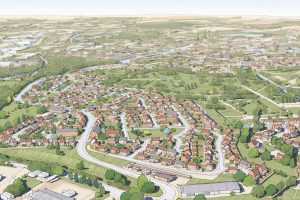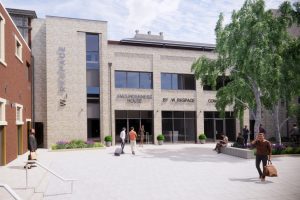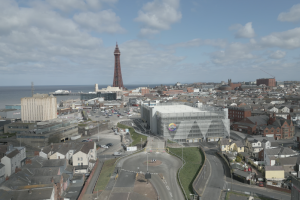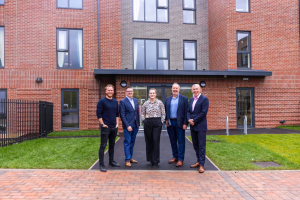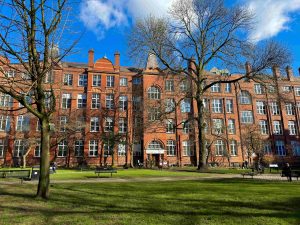Iconic buildings get low carbon energy system

TWO of Manchester’s finest public buildings are generating their own low carbon energy supply by using combined heat and power (CHP) technology.
As part of the multi-million pound refurbishment of the Grade Two-listed Manchester Town Hall Extension and Central Library, main contractor Laing O’ Rourke worked with Salford-based CHP specialist ENER-G, NG Bailey and BDP to design, develop and supply the energy efficient system.
The ENER-G CHP technology is reducing the buildings’ carbon dioxide emissions by 710 tonnes per year, which is equivalent to the environmental benefit of removing 237 cars from the road or the carbon offset in one year by 582 acres of forest.
The two 230kWe ENER-G engines produce the majority of heat, cooling and electricity required by the historic buildings, making a significant contribution to reducing energy consumption and utility bills.
The Town Hall CHP project is the first phase of the proposed Greater Manchester Heat Network programme, which will provide a low carbon district heating supply for four city centre clusters, including Manchester, Bury, Oldham and Stockport.
Managing director of ENER-G Combined Power Alan Barlow said: “As a local business we are pleased to help Manchester City Council deliver on its carbon reduction programme. The units are operating at around 90% efficiency, helping to create cleaner and affordable energy for the city. This project demonstrates the suitability of CHP for retrofit projects.”
By using two CHP engines, the Council is able to flex between the two units to maximise operating hours of the system overnight, when the electrical demand for the building is reduced.
The CHP system has been designed to operate in ‘island mode’. In the event of an electrical network failure, it can be switched to operate independently from the main electrical grid.
Manchester’s Town Hall Extension and Central Library are buildings of national significance, and are believed to be among the best examples of architecture of the 1930s.
Combined heat and power – the simultaneous generation of electricity and useful heat – is around twice as efficient as conventional power generation, where the generated heat is wasted and further losses occur in transporting the electricity rather than using it on-site.CHP can achieve cost savings of up to 40% over electricity sourced from the grid and heat generated by on-site boilers.

